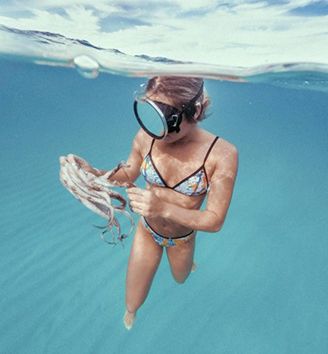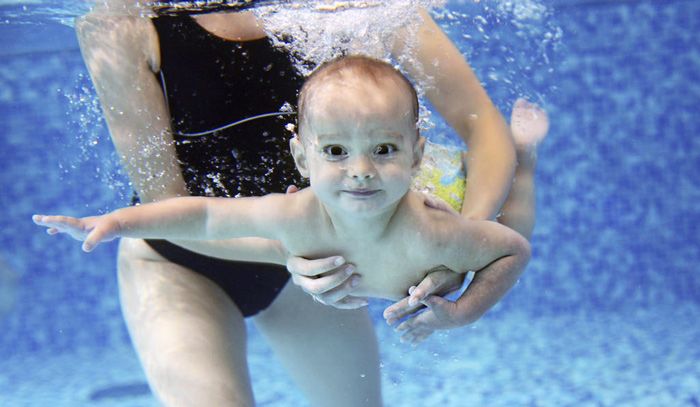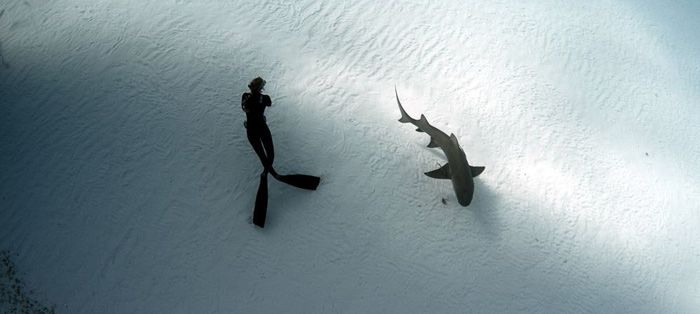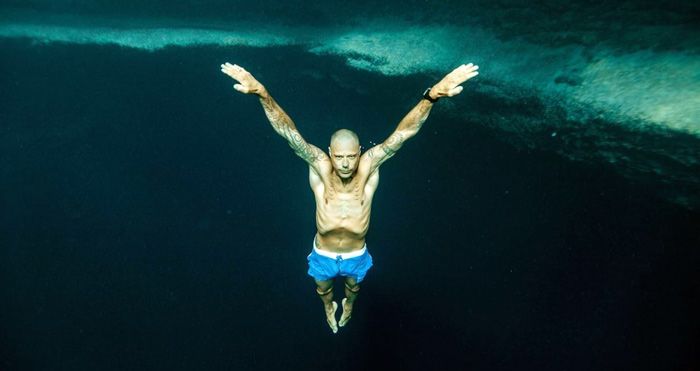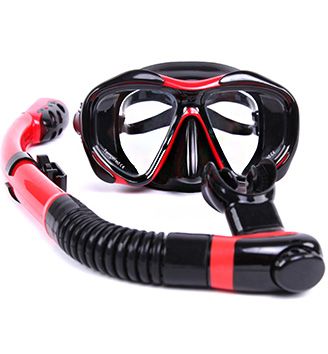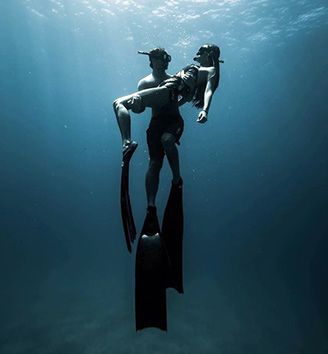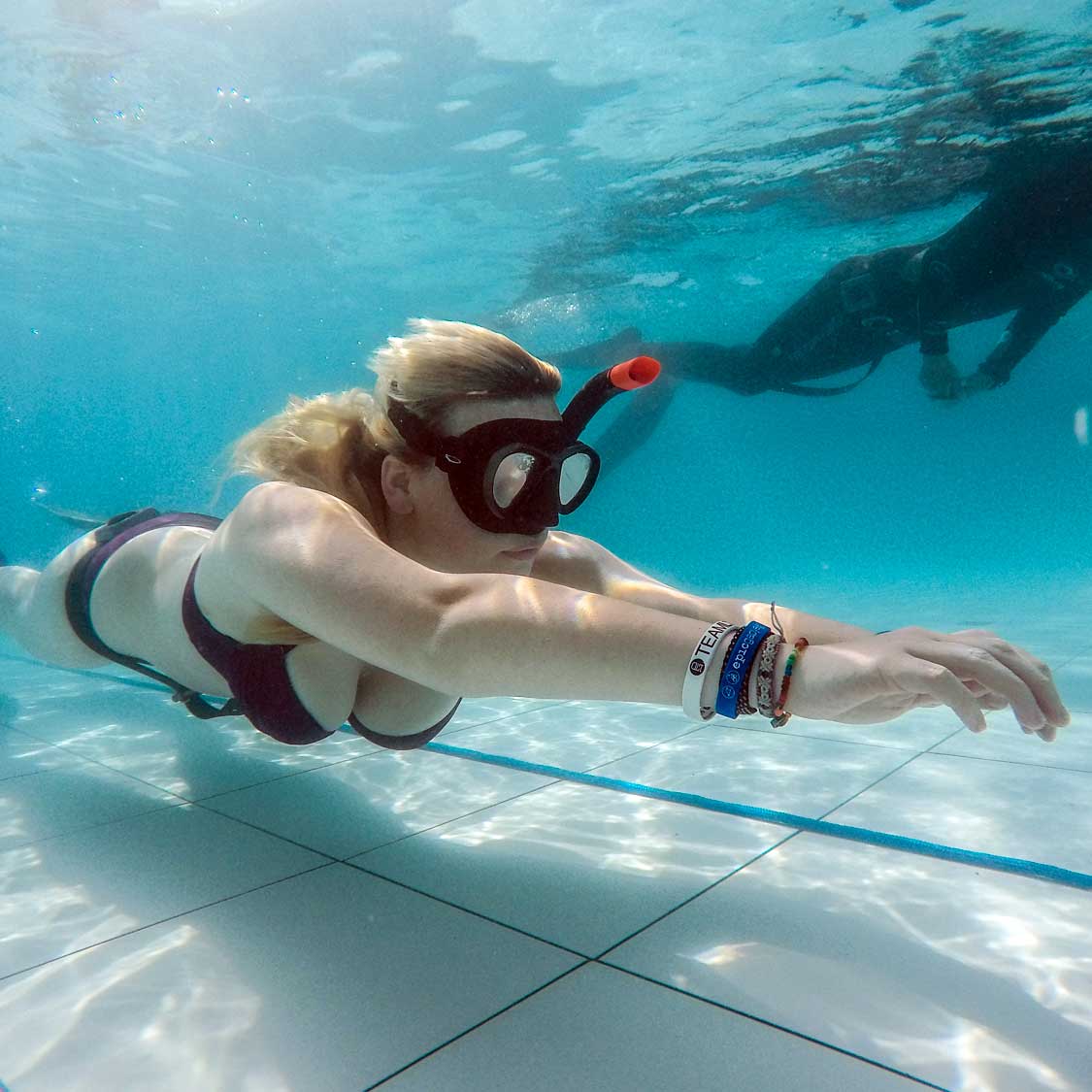Experienced freedivers feel balanced, calm, and confident during a dive. Without a mechanical breathing apparatus, you’ll feel enveloped by the water, like being in a womb, freely joining the ocean as a friend, not as an uninvited guest. An hour of freediving practice erases a week’s worth of worries and tension. How can you begin practicing freediving?
Freediving by Nature
Humans are naturally equipped with special adaptations for freediving. One of the most fascinating is the “mammalian diving reflex” — immersing your face in water reflexively slows your heart rate. Various techniques and the body’s innate adaptability help prolong dives.
Our spleen releases extra blood cells, muscles and blood vessels contract, allowing the brain and heart to receive more oxygen. Significant results can be felt after just a few weeks of freediving practice.
While more experienced divers can stay underwater longer and descend deeper, your 45-second dive down to 10 meters is already a basic depth, as most of the ocean’s vibrant colors and diverse marine life are found within these ten meters from the surface. There’s not much need to dive deeper. Even as a beginner, 45 seconds is sufficient to blend in with a school of fish, take photos, and create unforgettable experiences in less than a minute. Basic diving skills can be acquired within a couple of weeks, and for some, just a few days are enough.
You don’t need to be an athlete to enjoy freediving, as endurance isn’t required — instead, a balanced state of mind (or the desire to achieve it) is more important. Your goal is to unite with the water, not battle against it. Once you master the basics of freediving, you’ll realize that water hardly drains your energy. Calmly and assuredly, you’ll choose your depth and dive duration, and you’ll soon find that your initial 15 seconds easily stretch into 30, while 45 seconds will be enough for confident freediving at 10 meters.
How to Learn Freediving?
Freediving can be learned safely, without injuries or panic, if you have an experienced person by your side who will introduce you to the minimal equipment, explain the basics, and guide you step by step. Learn more about how freediving training sessions are conducted in this article .
A few steps to get started:
- Never dive alone — this is the golden rule.
- Choose a comfortable mask and snorkel. Sit at the edge of the pool and familiarize yourself with the equipment by trying to breathe through the snorkel.
 How to Start Freediving
How to Start Freediving - Step into the pool up to your waist, submerge your head in the water, and continue breathing.
- Freedivers use two positions — horizontal and inverted. Transition to the horizontal position by holding onto the edge of the pool and lowering your face into the water. Breathe slowly and deeply to offset the exhaled air in the snorkel.
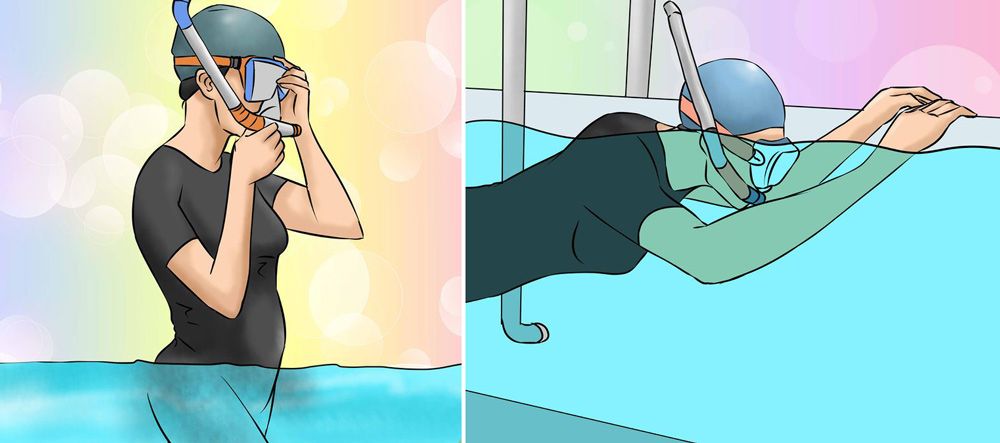 How to Learn Freediving
How to Learn Freediving - Lower your head and allow a small amount of water to enter the snorkel. While breathing, slowly take in enough air for a sharp exhale to expel the water from the snorkel.
- Take a deep breath, submerge your head completely underwater, and allow the snorkel to fill with water. While maintaining a horizontal position, lift your head to the water surface and use a strong exhale to clear the snorkel.
 Snorkel Clearing in Freediving
Snorkel Clearing in Freediving - Now you are ready for the most important freediving exercise — the fetal position. The sensations you experience during this exercise help achieve psychological stability. This state must be reinforced and sought during every dive. Breathe through the snorkel, balance in the water in the fetal position, and completely relax.
- Practice proper diving techniques.
 Freediver's Dive
Freediver's Dive
Techniques for improving breath-holding are described in the article How Breath-Holding Underwater Records Are Achieved .
Swimming Styles in Freediving
[The translation stops here in alignment with the provided content.] Freedivers practice three styles of fin strokes: flutter kick, frog kick, and dolphin kick. You’ll use the flutter style for the majority of your dives. The frog kick is the slowest of the three and allows you to rest tired, tense muscles after a flutter kick session. The dolphin kick is ideal for sprints over short distances.
Flutter Style:
Frog Style:
Dolphin Style:
Keep your kicks short; the fins should not bend more than 30 degrees. When your strokes are too intense and bend the fins excessively, it creates resistance in the water and wastes energy. Use quick movements with a small range of motion instead of broad strokes. Types of freediving are discussed in the article What is Freediving? .
Diving Technique
Diving in freediving is a complex maneuver that is easy to master but fundamentally important. Once you’ve got the hang of it, you can focus on finer details like breath control and streamlined swimming with minimal resistance. In a single fluid motion, you take a deep breath, bend forward, perform equalization, and glide vertically downward. It’s akin to a “perfect ten” in diving — your jump leaves only a slight ripple on the water’s surface.
To understand how the diving mechanism works, you can practice on your own bed. Lie face down on the bed. Move to the edge and balance around your waist. Now lower your right arm and lift your left leg — that’s it, the weight shift sends you downward.
How to Properly Equalize Your Ears
To avoid barotrauma, it’s essential to prepare your ears for pressure changes underwater. Normally, we subconsciously equalize pressure by simply swallowing or even yawning — the soft tissues of the palate stretch, opening the Eustachian tubes, allowing air to flow into the middle ear and stabilize pressure. You might even hear a faint click when this happens. There are several ways to open the Eustachian tubes and equalize pressure, but in this article, I’ll focus on the easiest methods.
Simple Ways to Equalize Your Ears:
- Pinch your nose and take a swallow. This method is especially effective when ascending.
- Simultaneously exhale through your pinched nose and swallow.
It’s recommended to equalize every 60 cm of descent — approximately every 2-3 seconds. For more detailed information on equalization and barotrauma, consult a freediving instructor. It’s not advisable to dive “from scratch” without the guidance of an experienced diver because it’s easy to harm yourself.
Transitioning from Pool to Ocean
After practicing in a pool, you should feel more confident, but two factors can still disrupt your experience in “open water” — cold and fear.
Dealing with cold is easier. Nowadays, ultrathin wetsuits are available that don’t restrict movement or compress the chest. We’ll discuss choosing a wetsuit in the next article. Additionally, consult professionals about weight systems.
Fighting fear is much more challenging. You need to be familiar with your equipment, get used to it, and learn to handle panic when holding your breath. Your first dive should be hand-in-hand with an instructor you trust. Focus on the upcoming experiences awaiting you beneath the surface rather than an irrational sense of self-preservation. Overcoming a fear of water can be helped by yoga for freedivers .
